

— Products —
 Consumer hotline +8618073152920
Consumer hotline +8618073152920 WhatsApp:+8615367865107
Address:Room 102, District D, Houhu Industrial Park, Yuelu District, Changsha City, Hunan Province, China
All products
Solar radiation sensors are devices that measure the amount of solar radiation or energy that is incident on a surface. These sensors are commonly used in meteorology, climatology, renewable energy systems, agriculture, and other fields where solar radiation plays an important role. The sensor works by detecting the intensity of sunlight across different wavelengths, providing data that can be used to assess solar potential, study climate patterns, and optimize energy product···
Tel/WhatsApp:+8615367865107
Email:Arvin@niubol.com +Nearly 100 partner companies in more than 68 countries. We are committed to providing high-quality, practical products to meet your needs and help you solve problems. Our products comply with international standards and are certified with ISO, CE and RoHS.Product Details
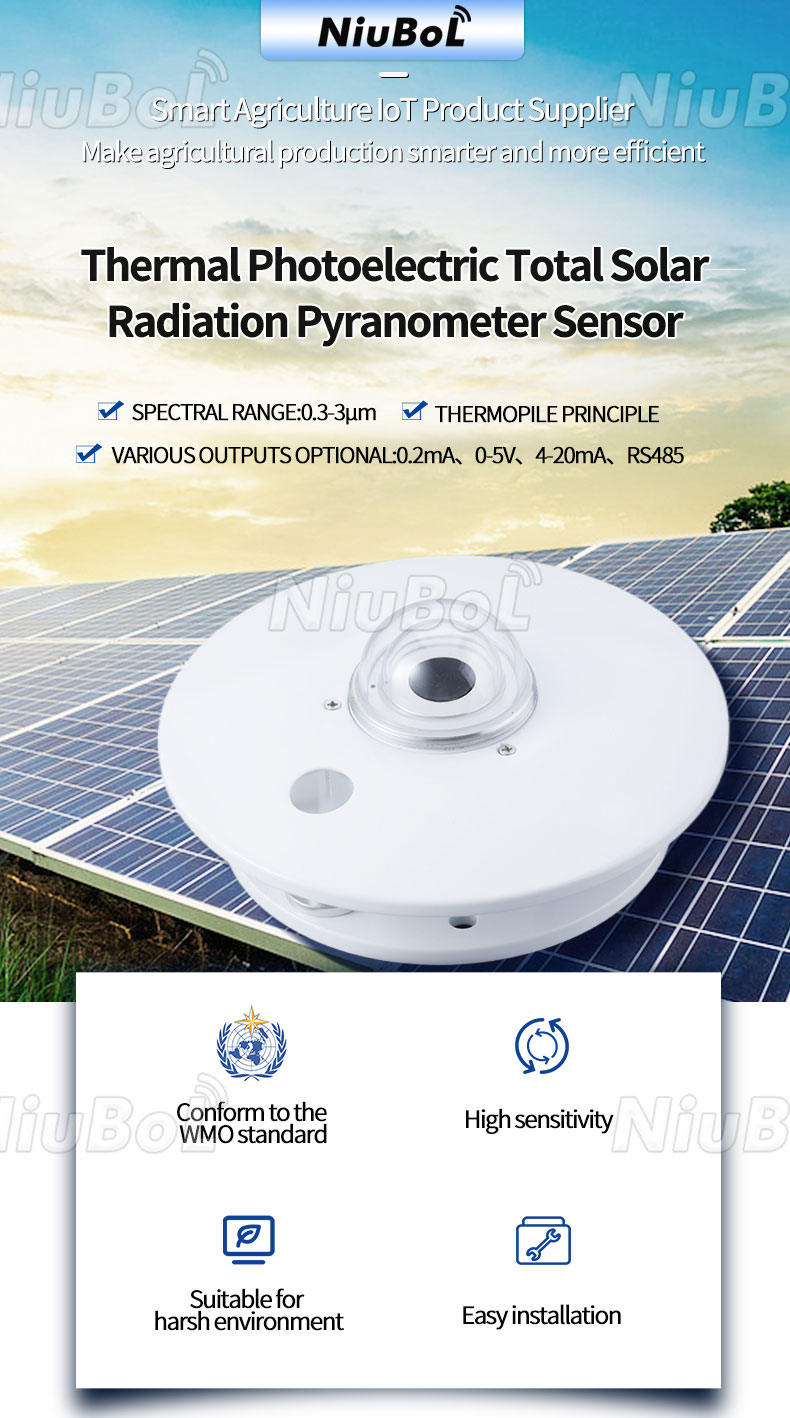

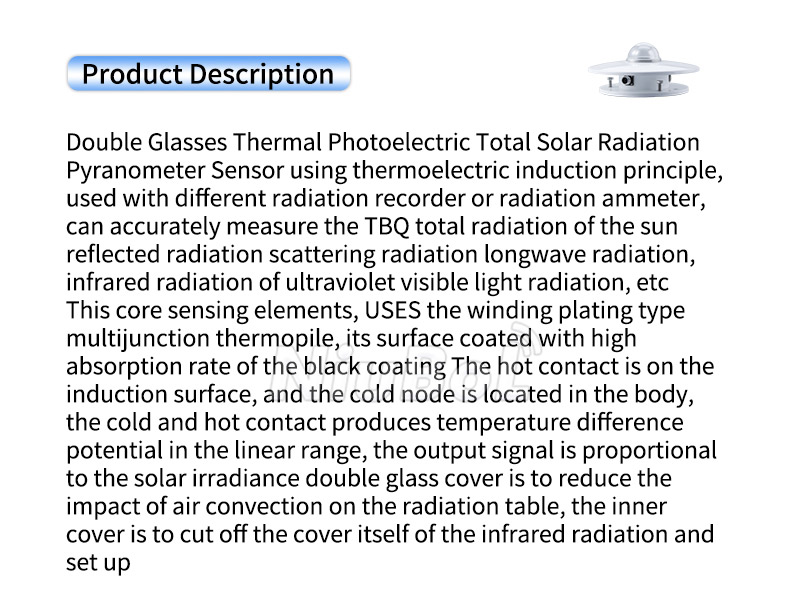
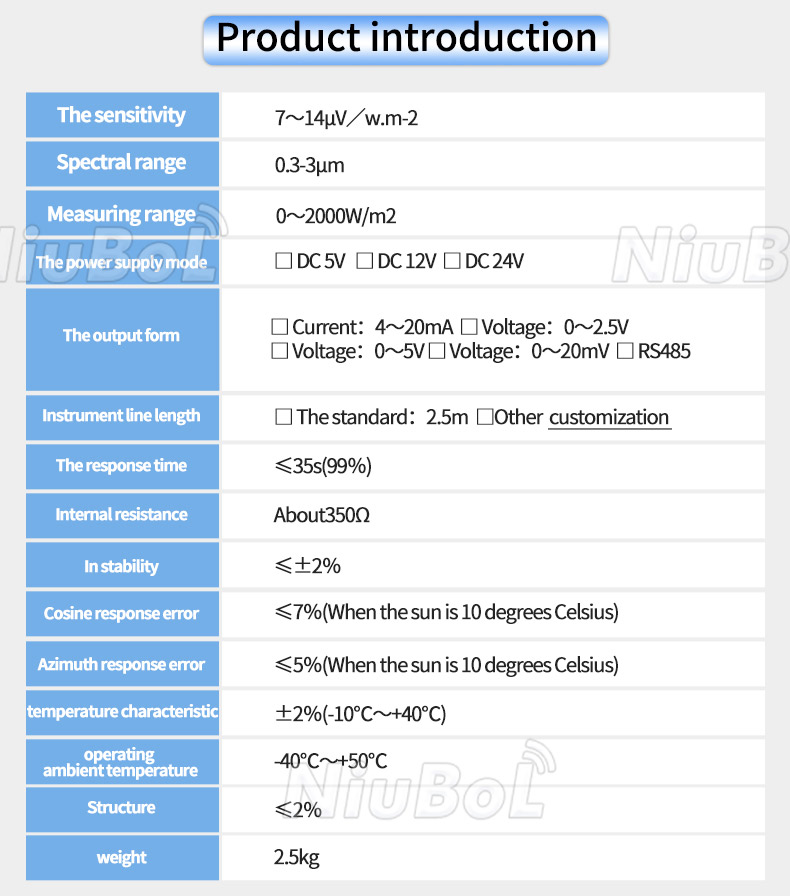
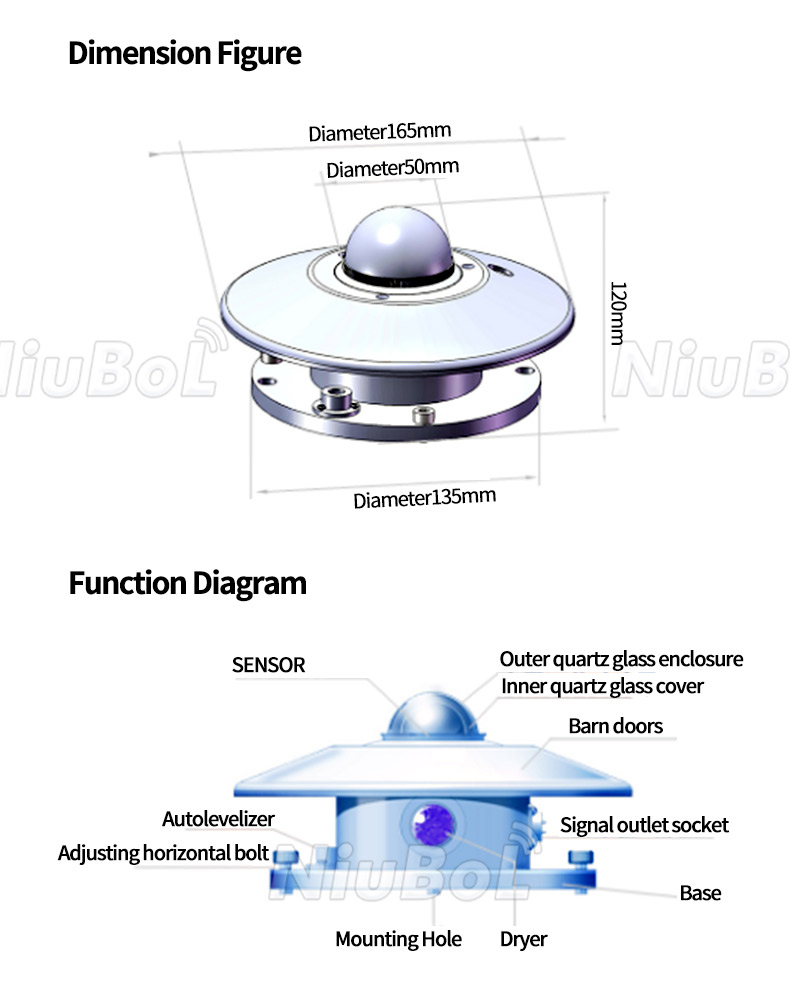
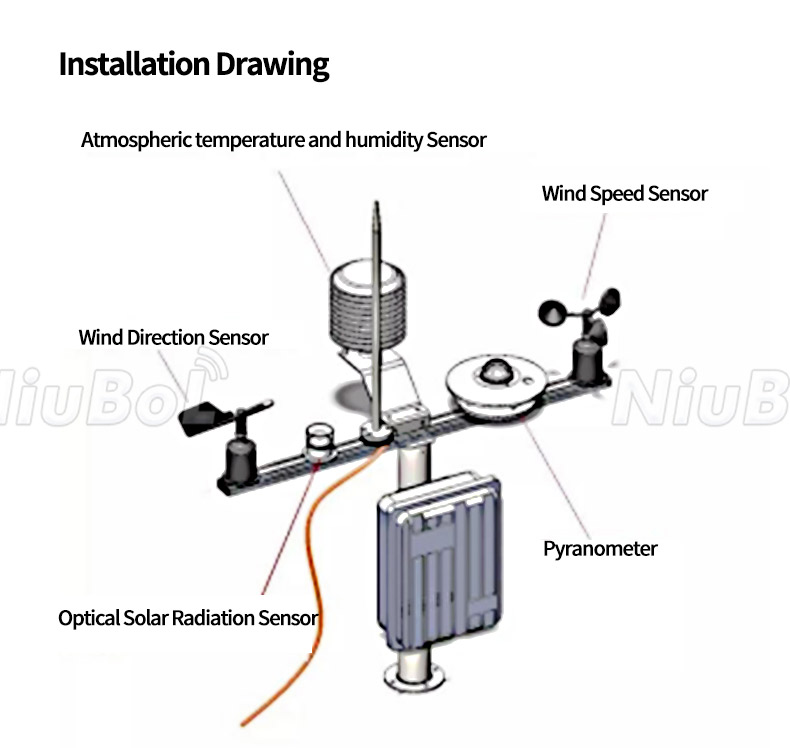
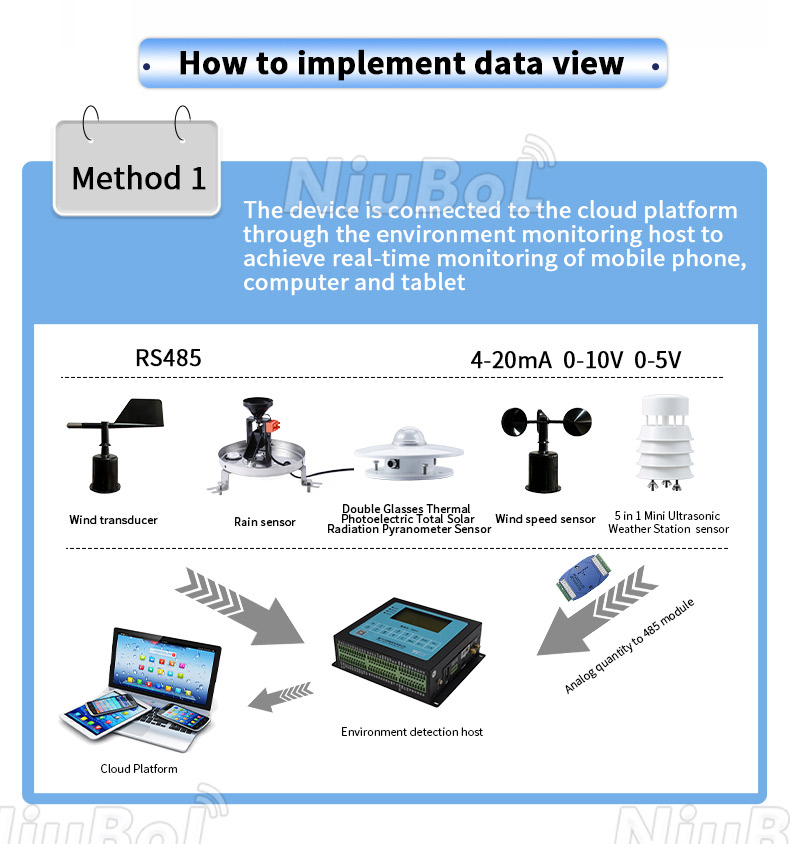
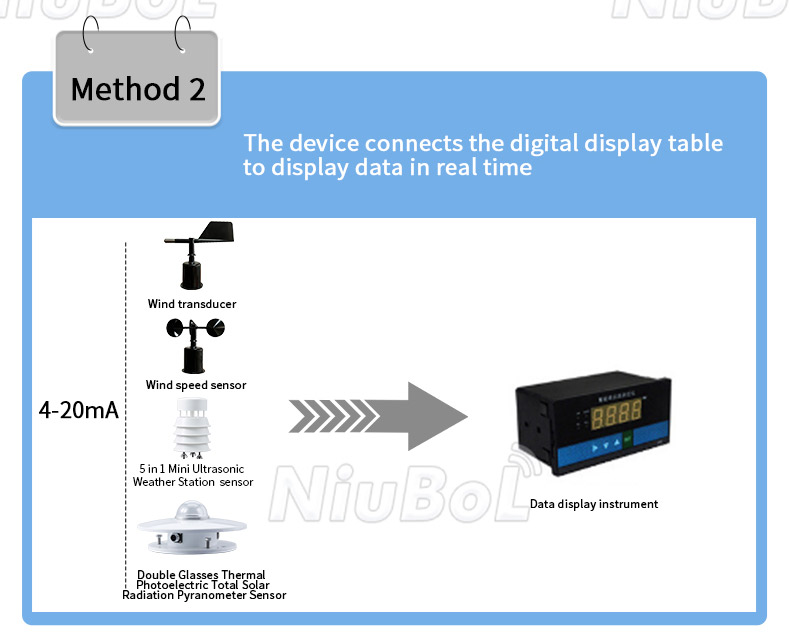
Solar radiation sensors are devices that measure the amount of solar radiation or energy that is incident on a surface. These sensors are commonly used in meteorology, climatology, renewable energy systems, agriculture, and other fields where solar radiation plays an important role.
The sensor works by detecting the intensity of sunlight across different wavelengths, providing data that can be used to assess solar potential, study climate patterns, and optimize energy production from solar sources.
The two most common types of solar radiation sensors are pyranometers and pyrheliometers.
A pyranometer measures the total solar radiation received from all directions, including direct and diffuse radiation. It typically consists of a thermopile sensor that generates a voltage signal proportional to the amount of solar radiation incident on the sensor surface. Pyranometers are often used to measure global horizontal irradiance (GHI) and diffuse horizontal irradiance (DHI).
A pyrheliometer, on the other hand, measures the direct solar radiation coming from the sun without any interference from the atmosphere. It typically consists of a thermopile or photodiode sensor that is pointed directly at the sun. Pyrheliometers are used to measure direct normal irradiance (DNI), which is the amount of solar radiation received per unit area perpendicular to the direction of the sun's rays.
Other types of solar radiation sensors include UV radiometers, which measure the intensity of ultraviolet (UV) radiation from the sun, and spectroradiometers, which measure the spectral distribution of solar radiation across different wavelengths.
Solar radiation sensors are typically designed to be sensitive to a specific range of solar radiation, and they require regular calibration to ensure accurate and reliable measurements. They are often used in combination with other sensors and data loggers to collect and analyze solar radiation data over time.
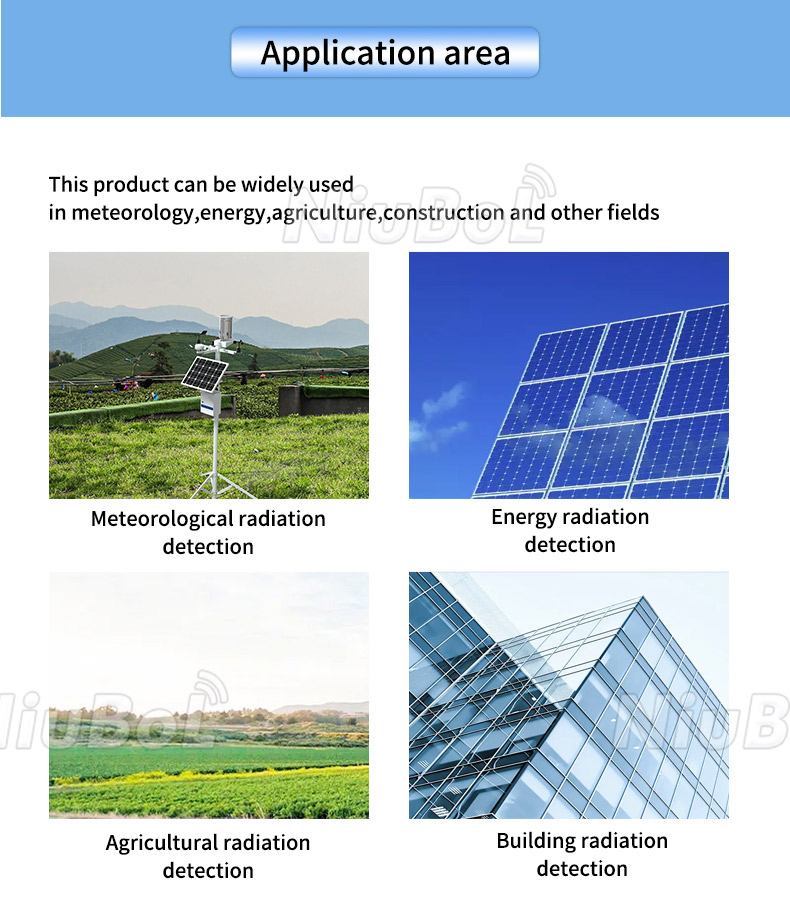
Solar radiation sensors have a wide range of application scenarios in a number of fields, the following are some of the major application areas:
1. Solar power generation: Solar radiation sensors are used to assess the potential energy output of solar photovoltaic power generation systems. By measuring the intensity and total daily amount of solar radiation, the feasibility and expected power output of a solar power project can be determined.
2. Agriculture: In agriculture, solar radiation sensors help in understanding the photosynthetic requirements of crops. This can help farmers optimise crop planting time, select the right crops and adjust agricultural practices to improve yields.
3. Climate change research: The data provided by solar radiation sensors is critical to understanding global climate change. By monitoring changes in solar radiation, scientists can study the patterns and causes of climate change, as well as predict future climate trends.
4. Weather forecasting: Data from solar radiation sensors can help improve weather forecasting models. Influences of solar radiation, such as cloud cover and atmospheric pollution, have an impact on weather and climate, so this data is crucial for predicting weather patterns.
5. Architecture and urban planning: In architecture and urban planning, solar radiation sensors are used to assess the daylight hours and solar energy potential of buildings, leading to the design of more energy-efficient buildings and urban layouts.
6. Environmental protection: Solar radiation sensors can be used to monitor environmental pollution and air quality. Solar radiation passing through the atmosphere is affected by the scattering and absorption of pollutants, so these sensors can provide clues about the health of the atmosphere.
7. Solar thermal: In solar thermal systems, such as solar water heaters, solar radiation sensors are used to monitor the availability of solar thermal energy to optimise system design and operation.
8. Space weather: In the space sector, solar radiation sensors are used to monitor the impact of solar activity on the space environment, which is critical for the safe operation of satellites and spacecraft.
These application scenarios show that solar radiation sensors are important for renewable energy development, environmental protection, climate change research, weather forecasting and space technology. With these sensors, we can make more efficient use of solar energy resources, address climate change challenges and promote sustainable development.
NBL-W-HPRS-Solar-Radiation-Sensor-Instruction-Manual-V3.0.pdf
Sensors & Weather Stations Catalog
Agriculture Sensors and Weather Stations Catalog-NiuBoL.pdf
Weather Stations Catalog-NiuBoL.pdf
Related recommendations
 Multi-Depth Soil Sensor RS485
Multi-Depth Soil Sensor RS485 TDR Soil Moisture Sensor
TDR Soil Moisture Sensor Pyranometer Solar Radiation Sensors
Pyranometer Solar Radiation Sensors Soil ph sensor
Soil ph sensor Tipping Bucket Rain Gauge
Tipping Bucket Rain Gauge Air Temperature and Humidity Sensor
Air Temperature and Humidity Sensor
Screenshot, WhatsApp to identify the QR code
WhatsApp number:+8615367865107
(Click on WhatsApp to copy and add friends)
